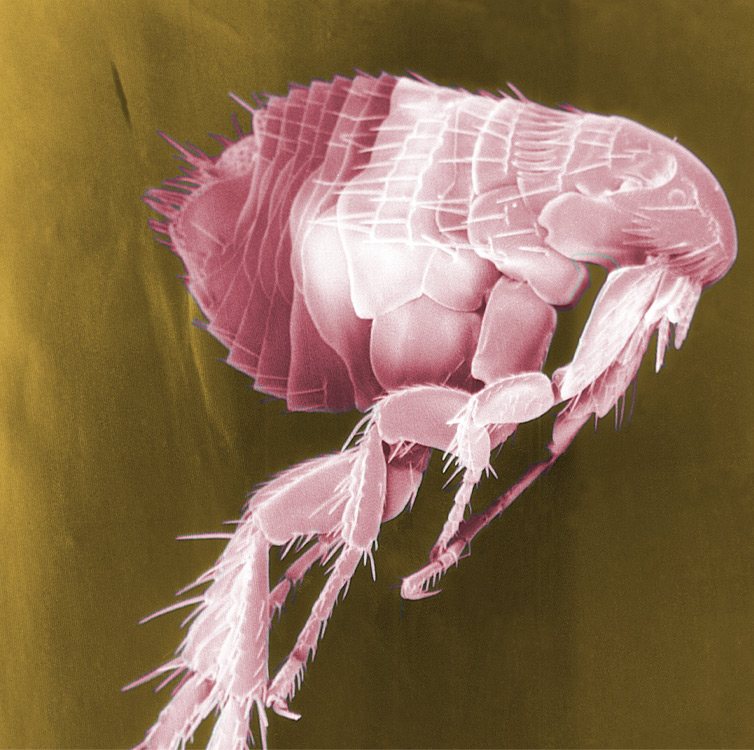Why Is Year-Round Tick and Flea Treatment Important?
You may have come to associate ticks and fleas with warmer weather, but the unfortunate reality is that these parasitic pests can strike at any time, year-round. Read on to learn more about the importance of staying up to date on your pet’s tick and flea treatment schedule.
TICK AND FLEA PROTECTION

Posted by bravectosouthafrica – 19 June 2020
Ticks and Fleas: Not Just a Warm Weather Problem
We hate to be the bearer of bad news, but the most common external parasites to infect both cats and dogs remain a problem all year long – it isn’t merely a case of summertime sadness. Ticks and fleas might prefer the warmer weather of summer and spring, but they can remain active throughout all seasons. This is especially true of a country such as South Africa, where many provinces rarely experience an icy winter.
When things start to cool down, fleas become especially sneaky. They may hitch a ride inside your home by latching onto your pets, clothes, shoes or any washing drying out in the sun. As the flea life cycle lasts between 14-42 days, any fleas that make their way into your home may be able to survive there for quite some time. This leaves your poor pets in a constant state of irritation and risk if they haven’t been provided with a recent tick and flea treatment. Because of their minute size, getting rid of them all once they’ve infested your home can become a nightmare.
This is why it’s so important for you to invest in long-lasting and fast-acting tick and flea medicine for all dogs and cats in your household. Most people tend to neglect doing this during the autumn and winter months.

Risky Business: What Happens When You Decide to Skip Your Pet’s Next Recommended Tick and Flea Treatment
Deciding not to treat your pets with back-to-back tick and flea treatments leave them vulnerable to infestations.
Flea bites can lead to a variety of other diseases and issues in pets, including:
- Acute itchiness and scratching, which can lead to hair loss
- Anaemia, especially in puppies and kittens, which may prove fatal if left untreated
- Tapeworm infestations (more on that later)
- The development of flea allergy dermatitis or FAD, a common, yet extremely unpleasant, skin condition resulting from an allergy to flea saliva that can prove fatal in severe cases.
Another important thing to note about fleas is that anyone who has been in close contact with an infected host or home is likely to be bitten as well. If a single household pet contracts fleas, the chances of the others contracting it as well is almost guaranteed. Therefore, if you suspect that one of your pets may have fleas, you should treat them all.
Tick bites, however, are the ones to be especially worried about, as they tend to lead to more serious issues. Bites from these particular wee nasties have the potential to cause numerous related diseases.
Tick bites, however, are the ones to be especially worried about, as they tend to lead to more serious issues. Bites from these particular wee nasties have the potential to cause numerous related diseases.
Keep in mind that dogs and cats aren’t the only ones that are susceptible to diseases carried by ticks and fleas. Oh, no – humans are as well. By protecting your pets, you are essentially also protecting yourself and your human family members.

How Flea Treatments Help the Prevention of Tapeworms
As briefly mentioned earlier on, a flea infestation in your pet can lead to them contracting tapeworms as well. A pet struggling with both internal and external parasites is definitely an unhappy one!
You may be wondering how fleas can lead to tapeworms. Are these creepy critters related? Well, it all starts when your pet ingests an infected flea. You see, the tapeworm initially lives inside the tiny flea. It then continues growing once inside your pet. Tapeworms attach themselves to the intestinal walls with a hook-like sucker and their teeth.
Fully matured tapeworms are segmented into a head, tail and a great many tail segments. Each segment is roughly the size of a grain of rice and adult tapeworms can reach lengths of up to 15 cm. As time goes by, the tapeworm releases its segments one after the other. The segments then travel through the digestive tract. Once outside the host’s body, these segments dry up and split open, releasing the many eggs inside.
This is when flea larvae come across the eggs and ingest them. Adult fleas play no role in this part of the tapeworm’s lifecycle. Infected flea larvae become adult fleas and while they mature the tapeworm eggs do as well. Your pet may accidentally ingest an infected flea while grooming or gnawing at a pesky flea bite. When the flea gets digested, the tapeworm eggs are released. They then hatch and proceed to attach themselves to the host’s intestinal lining, where they grow to full maturity.
All this is very unpleasant business, but one bit of good news is that your pets aren’t able to directly transmit tapeworms to each other or you. Tapeworms must live part of their life cycle within a flea to reach full maturity – the eggs must mature before they are able to contaminate mammals.
There is, however, a small chance that humans may also become infected with flea tapeworm when you accidentally ingest an infected flea. Always wash your hands after stroking your pets. Some tapeworm species can cause what is known as ‘hydatid disease’ in humans. Cysts start growing in various organs, causing serious disease and it may even prove fatal. It is difficult to control and treat, so it is of the essence to reduce the odds of exposure by ensuring your pets receive frequent tick and flea treatments. Studies have shown that Bravecto® treatments prevent tapeworm infections in dogs.
For more on tapeworms and the symptoms they cause in pets, have a look at Infurmation’s informative article here.

Why Choosing Bravecto® for Year-Round Tick and Flea Treatment Is Best
Knowing what you know now, you should realise that what your pet needs is a fast-acting and long-lasting external parasite solution to keep your entire household safe and comfy. Lucky for you, there’s Bravecto®. Research has shown that pet owners across the globe prefer the convenience of a longer-lasting tick and flea treatment: a whopping 89%! Monthly treatments simply don’t compare. During the same research, it was revealed that Bravecto® received a 96% score when it came to pet owner satisfaction.
There are three excellent products available in the current Bravecto® range: two for dogs and one for cats. Bravecto® Chew gives dogs 12 weeks of tick, flea and mite protection in a single dose, while Bravecto® Spot-On for Dogs provides 4 months of tick protection and 6 months of flea protection – all in a single treatment! Bravecto® Spot-On for Cats will keep your cat free from ticks, fleas and ear mites in one easy to apply dose, remaining effective for 3 months.
Bravecto® makes your life easier. With 4 doses of your preferred treatment, your pet will remain protected against ticks, fleas and mites for nearly a whole year. This means fewer treatments to remember. Worried you’ll forget when to give your pet their next dose of Bravecto®? Just download our handy reminder app. All you have to do is create profiles for your pets, select the treatment used and the last known date on which you gave it. You’ll receive a notification the next time your pet’s dose is due.

Flea Fact File
In case you’re still undecided about back-to-back tick and flea treatments for your pets, have a read through some skin-crawling flea facts:
- A flea can jump up to 18 cm vertically and up to 33 cm horizontally.
- Fleas are able to survive outside for approximately five days in temperatures as low as 1 °C.
- Flea pupae are able to survive year-round in spaces that are protected from the cold and house animals. They can survive anywhere between 7-200 days on average and will continue to survive even longer in favourable conditions. The inside of upholstered furniture and automobile interiors have been known to be affected.
- Other diseases caused by fleas include: allergies/rashes, cat scratch disease, flea typhus, murine typhus and plague.

Subscribe to our Newsletter
Get to know your furry friend better! Sign up for all things dog- or cat-related.
The Hairy Facts about the dreaded hairball
12 April 2021
Help! My dog’s barking mad! Volume 2
12 April 2021
Your Itchy, Scratchy Cat – All About Cat Skin Problems
12 April 2021
The Dog’s Diet: A Bone of contention?
01 April 2021
Mango Fly Worms: How to Spot and Eliminate them
Posted on November 28,2019
Managing Mange And Mites In Your Dog
Posted on June 11,2018
Why Do Cats Purr and How? Learn What Your Cat Is Saying
Posted on October 14,2020
How to Get Rid of Ear Mites in Dogs
Posted on November 06,2019









